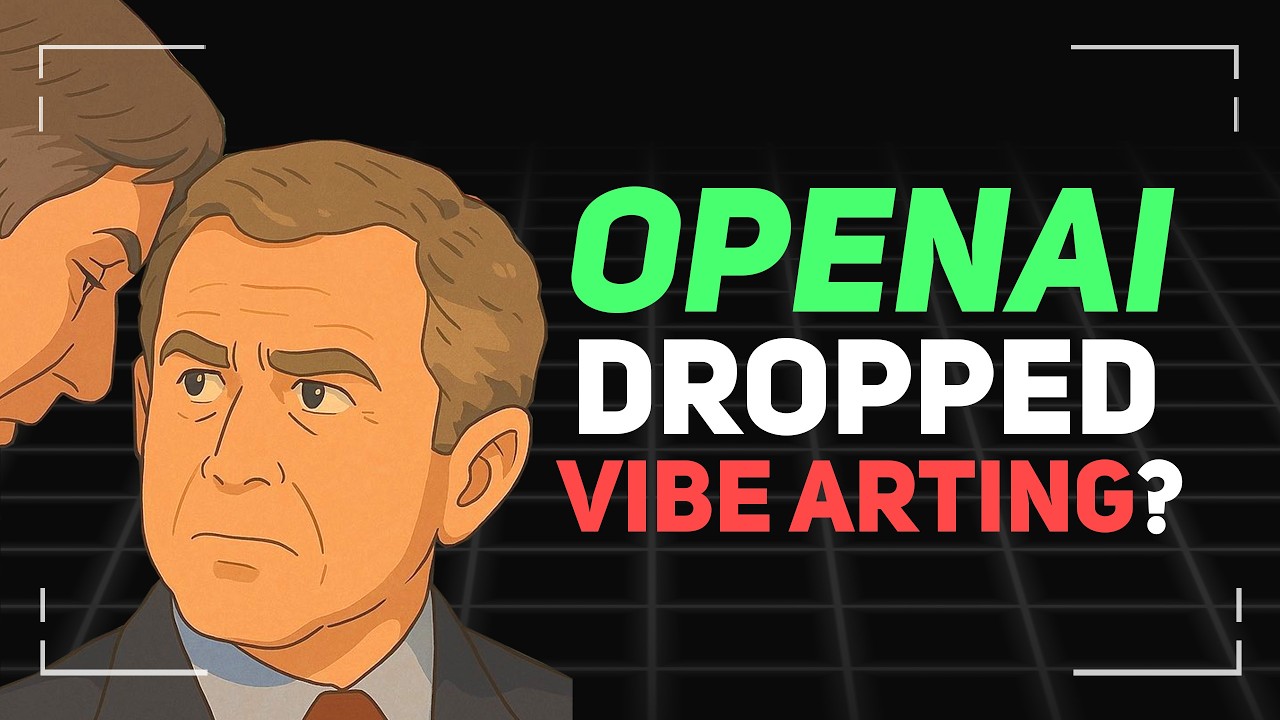The video discusses the rise of “vibe arting” due to OpenAI’s GPT-4.0 image generation model, which allows users to create images from text prompts easily, leading to a surge in popularity on social media. It highlights the model’s advanced multimodal capabilities, its comparison to previous models, and introduces Recraft as a collaborative design platform, while also addressing potential copyright concerns related to AI-generated art.
The video discusses the emergence of “vibe arting,” a phenomenon sparked by OpenAI’s recent release of the GPT-4.0 image generation model. This model allows users to create images simply by using text prompts, making it accessible to anyone without requiring technical expertise. The video highlights how this ease of use has led to a surge in popularity on platforms like Twitter and TikTok, particularly for generating images in the style of Studio Ghibli, despite the model’s capabilities extending far beyond that specific aesthetic.
The narrator contrasts OpenAI’s GPT-4.0 with previous image generation models, noting that while earlier versions like DALL-E produced mixed results, GPT-4.0 has achieved a significant milestone by integrating both language and image generation into a single, unified model. This multimodal approach allows the model to understand and generate content across different formats, which is a complex feat that few other companies have managed to accomplish successfully. The video emphasizes that this capability is what sets GPT-4.0 apart from its predecessors and competitors.
The video also introduces Recraft, a design platform that combines AI image generation with collaborative design tools. Recraft is positioned as a powerful alternative to traditional image generation platforms, offering features like real-time collaboration and advanced text generation within images. The narrator praises Recraft for its ability to produce high-quality, photorealistic images and for its user-friendly interface, which allows for quick iterations and mockups, making it particularly useful for designers and businesses.
As the video delves deeper into GPT-4.0’s capabilities, it highlights the model’s impressive semantic understanding of images. The narrator shares examples of how the model can accurately recreate scenes and subjects, demonstrating its ability to interpret and generate images that are not mere copies but rather unique interpretations based on user prompts. This level of detail and understanding is what makes the model particularly effective for generating images in specific styles, such as that of Studio Ghibli.
Finally, the video touches on the implications of such powerful image generation technology, including potential copyright concerns and the ease with which users can replicate artistic styles. The narrator reflects on the dedication and effort that goes into traditional animation, particularly in the context of Studio Ghibli’s hand-drawn films, contrasting it with the rapid generation capabilities of AI. The video concludes by encouraging viewers to explore the latest AI research and developments, while also acknowledging the support from patrons and followers.
